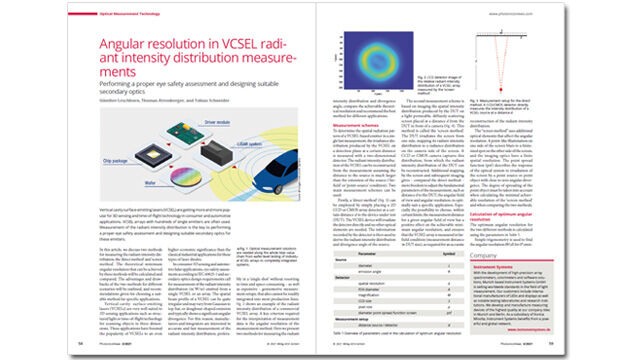Angular resolution in VCSEL radiant intensity distribution measurements

22.06.2021
Englischer Artikel von Günther Leschhorn, Thomas Attenberger, and Tobias Schneider
In this article, we discuss two methods for measuring the radiant intensity distribution, the ‘direct method’ and ‘screen method’. The theoretical minimum angular resolution that can be achieved by these methods will be calculated and compared. The advantages and drawbacks of the two methods for different scenarios will be outlined, and recommendations given for choosing a suitable method for specific applications. Vertical-cavity surface-emitting lasers (VCSELs) are very well suited to 3D sensing applications such as structured light or time-of-flight technology for scanning objects in three dimensions. These applications have boosted the popularity of VCSELs to an even higher economic significance than the classical industrial applications for these types of laser diodes.
In consumer 3D sensing and automotive lidar applications, eye safety assessments according to IEC 60825-1 and secondary optics design requirements call for measurement of the radiant intensity distribution (in W/sr) emitted from a single VCSEL or an array. The spatial beam profile of a VCSEL can be quite irregular and may vary from Gaussian to top-hat, or doughnut-shaped emission and typically shows a significant angular divergence. For this reason, manufacturers and integrators are interested in accurate and fast measurement of the radiant intensity distribution, preferably in a ‘single shot’ without resorting to time and space-consuming – as well as expensive – goniometric measurement setups, that also cannot be readily integrated into most production lines.